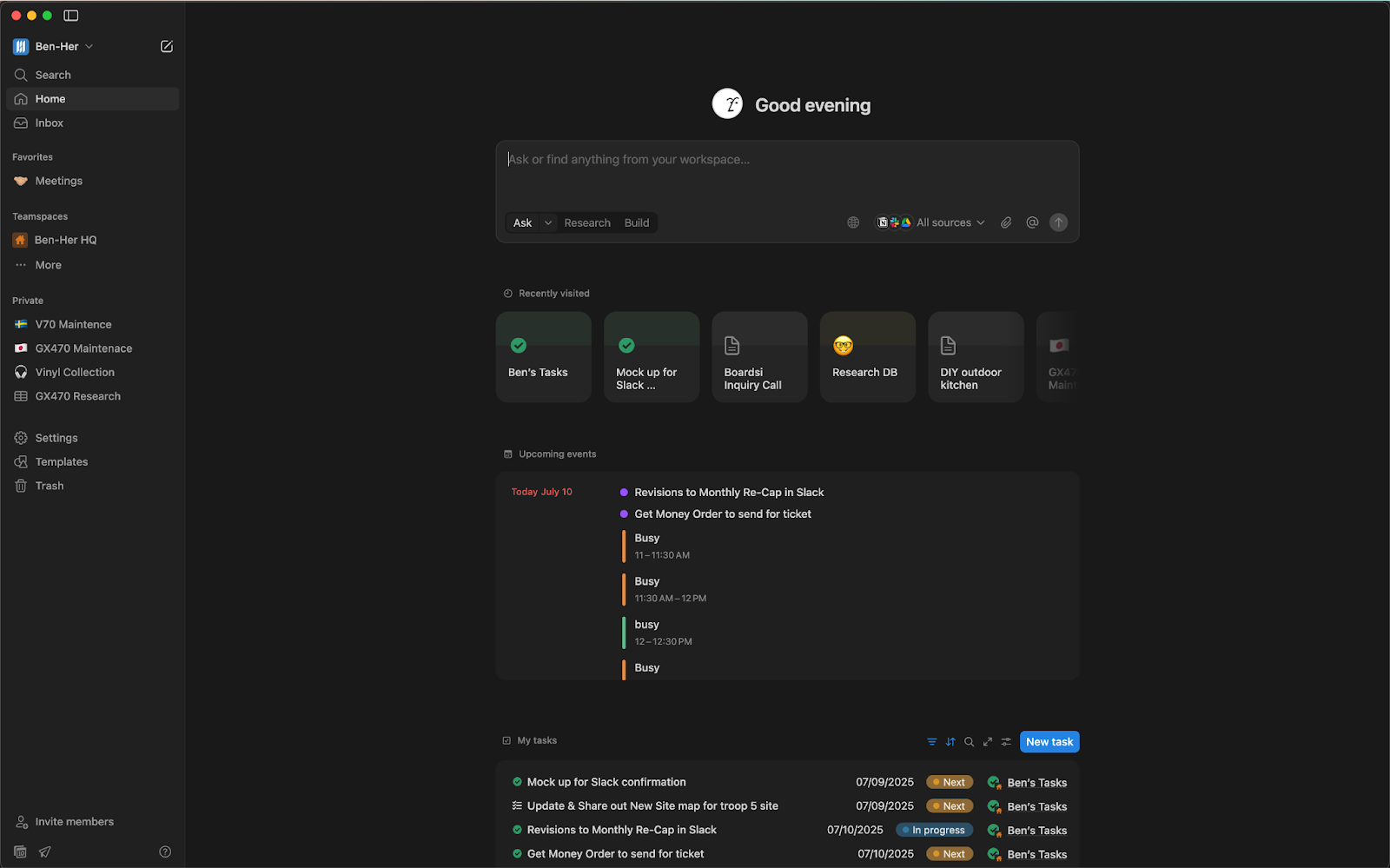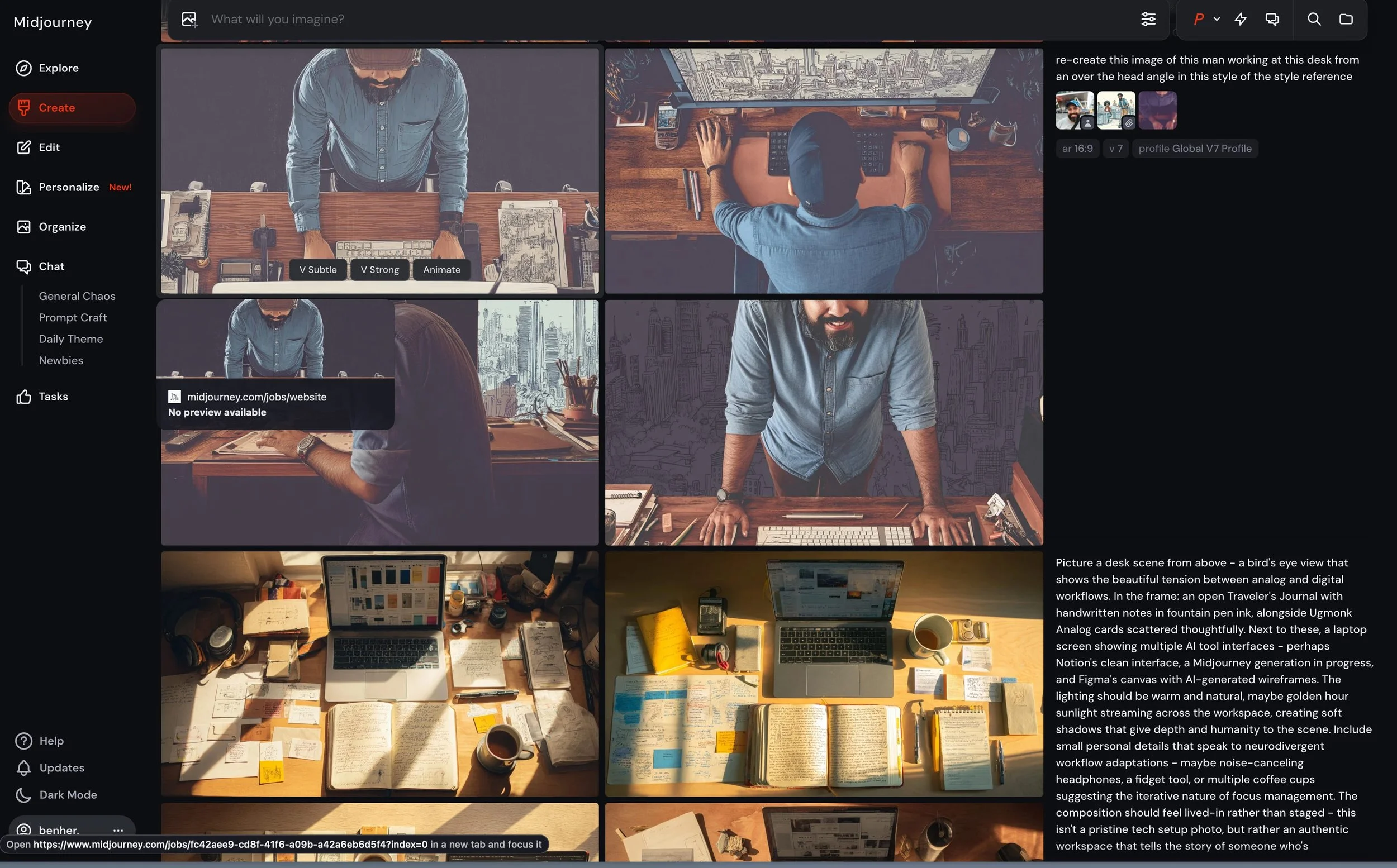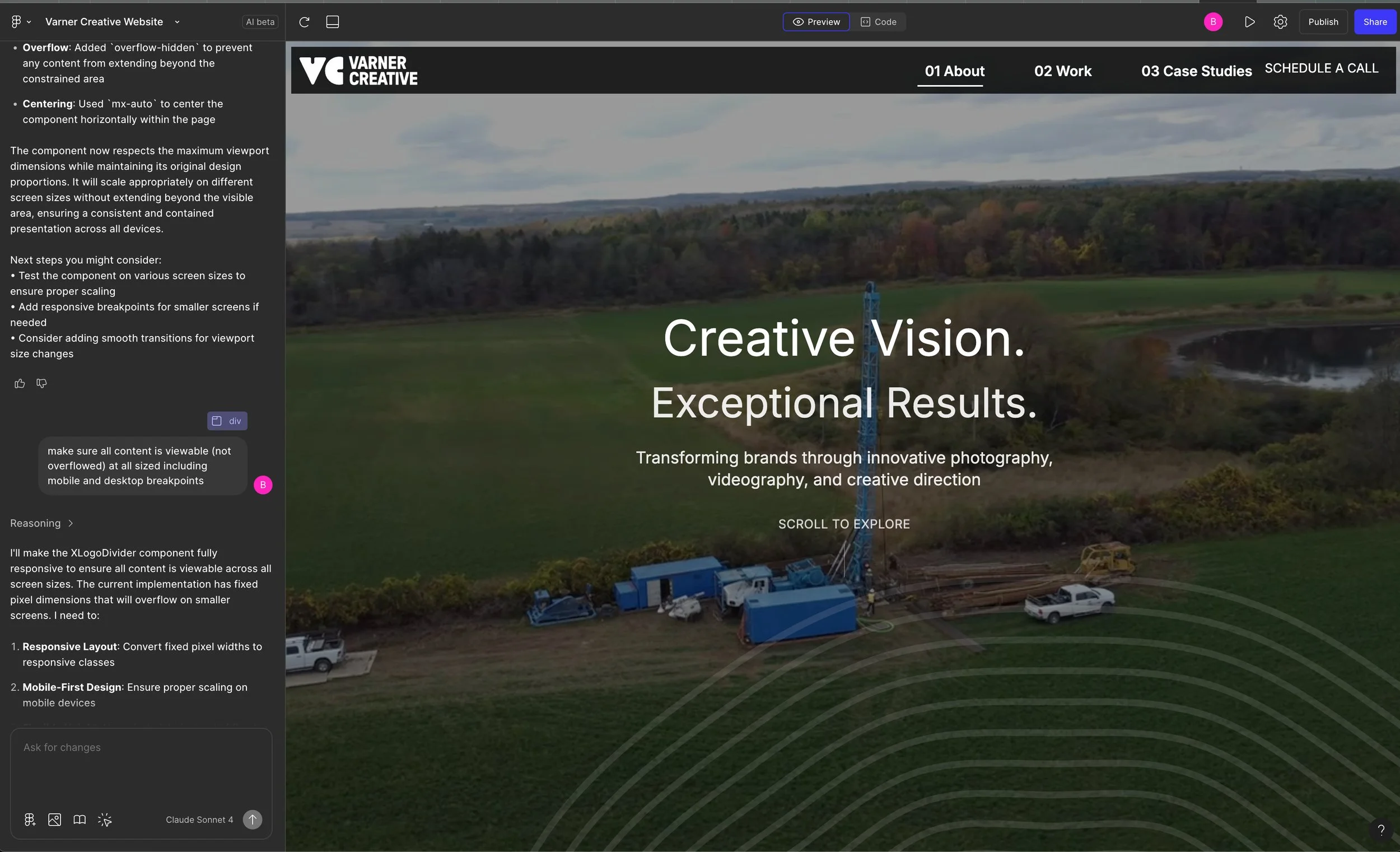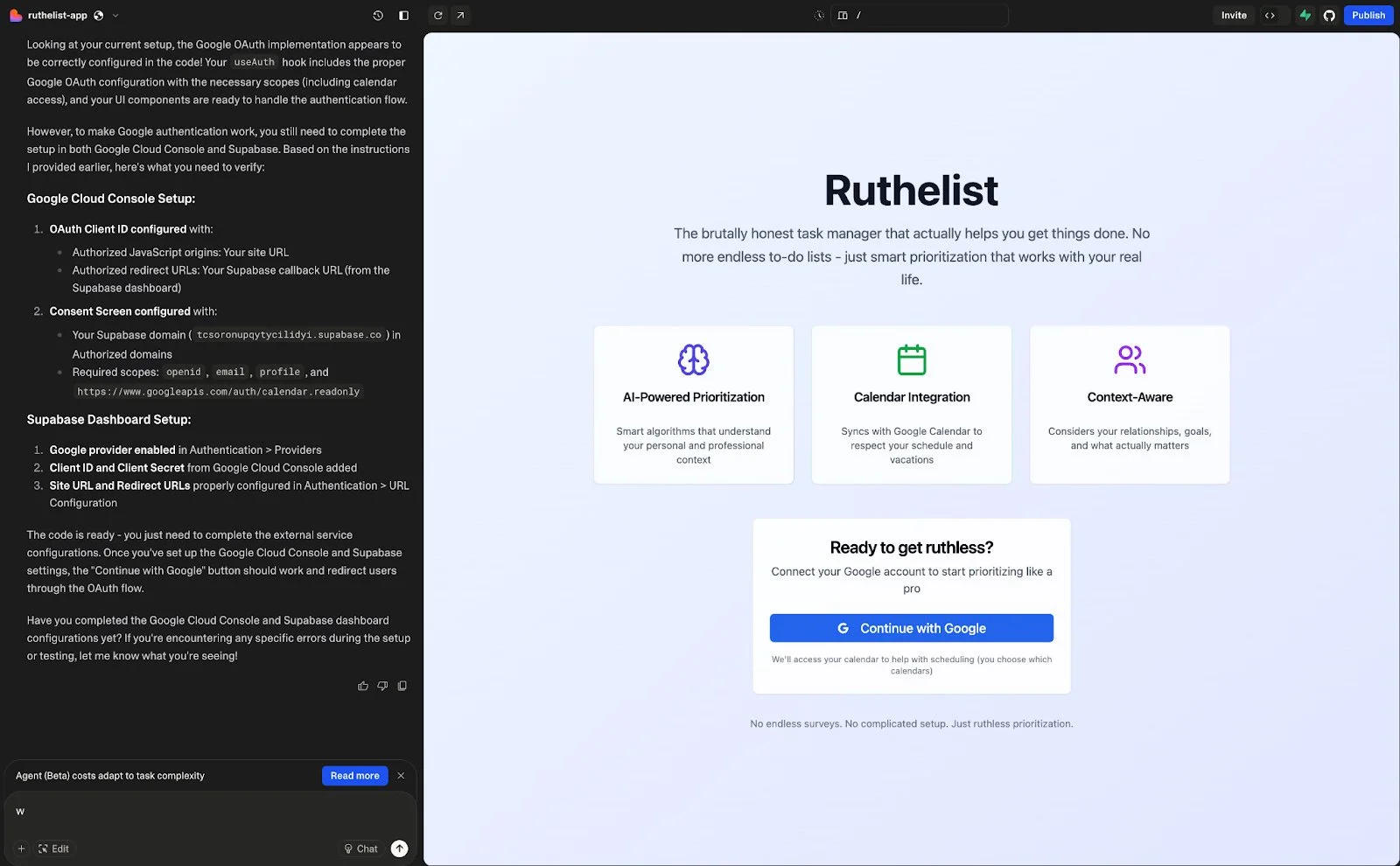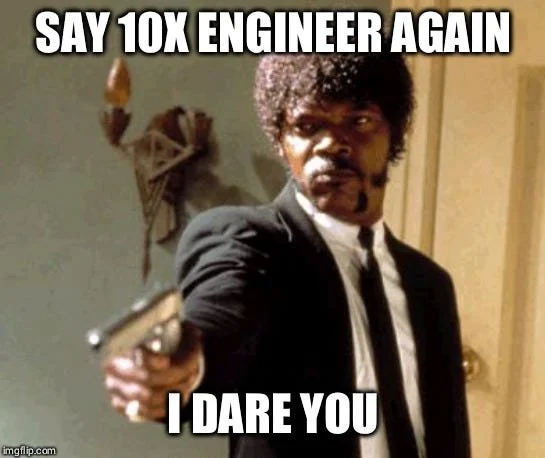Beyond the Hype: How I'm Actually Integrating AI into My Work and Life
Moving past glorified search engines and meme generators to build a truly augmented workflow
I’ve been thinking a lot about transformation lately. How we adapt to technological shifts that fundamentally alter not just our work, but who we are as professionals. There's something deeply personal about the current AI moment that reminds me of another inflection point in my career, one that shaped how I approach change itself.
The Parallel Evolution: From UX Design to AI Integration
I started my career in the early days of what we then called "UX Design." A field that barely existed when I graduated with my BFA in Graphic Design. Back then, explaining what "user experience" meant felt like speaking a foreign language. Clients would stare blankly when I mentioned user research. Fellow designers dismissed it as unnecessary overhead. "Good design speaks for itself," they'd say. "You don't need all these studies and tests."
Sound familiar?
That nascent field evolved through "Experience Design," then "Product Design," and now we're witnessing the next major shift as AI fundamentally changes how we approach creative and strategic work. Just as UX design started as a misunderstood discipline that eventually became essential, AI integration in our workflows is following a similar trajectory.
The parallels are striking, and they're personal. Early UX practitioners had to cobble together workflows from disparate tools, justify their methods to skeptical teams, and prove value through results rather than credentials. Today, I find myself in a similar position. Experimenting with AI tools, developing new workflows, and demonstrating practical value while others debate the philosophy.
But here's what I've learned: every technological evolution creates both displacement and opportunity. The question isn't whether change will happen. It's whether we'll be proactive participants or reactive casualties.
The Neurodivergent Advantage in an AI World
My relationship with technology has always been deeply personal. As I explored in my earlier piece about designing schedules as a neurodivergent person, my brain processes information differently. Dyslexia transforms reading into a complex negotiation between words and meaning. ADHD turns focus into a precious, finite resource that demands strategic allocation.
For years, I developed elaborate workarounds. I became an expert at nodding along while frantically trying to process information that felt like it was written in a foreign language. I learned to ask strategic questions that bought me time to catch up. I perfected the art of looking engaged while my mind wandered to seventeen different places.
But AI tools have fundamentally changed the game, not by replacing my thinking but by removing the friction that prevented me from accessing my own capabilities.
Just as the early UX tools helped me understand user behavior in ways that pure intuition couldn't, AI tools are helping me overcome cognitive barriers that have limited my effectiveness for decades. It's not about becoming superhuman. It's about becoming more fully human.
My AI-Augmented Toolkit
Notion: The Central Nervous System
Notion has become my external brain, and I mean that literally. I've tried other tools before—spent months tinkering with Obsidian, building elaborate knowledge graphs and automation systems. But here's the thing: I'm only a "good-enough to be dangerous" developer. I'd inevitably hit technical walls when trying to create complex interactions with the tools I use most. The momentum would die, and I'd abandon yet another promising system.
Notion changed this pattern. Beyond basic note-taking, I'm using Notion's AI features to help me organize thoughts, make connections between conversations, and track important information about the people I work with. The AI helps me surface relevant context from previous meetings, connect dots between projects, and even suggest follow-up actions based on conversation patterns.
What's particularly brilliant is Notion's AI meeting notetaker. Unlike other tools that require complex integrations with Zoom or Teams, it simply listens to your computer's microphone. No API connections, no admin permissions, no elaborate setup process. Just open Notion, start the AI recorder, and it captures everything while I focus on the conversation. The AI captures not just what was said, but action items, decisions, and even emotional context.
Later, I can review and synthesize without having missed crucial nuances because I was focused on note-taking. It's allowed me to show up as myself in meetings rather than as someone performing the role of good note-taker.
Notion Calendar and Notion Mail extend this intelligence into my scheduling and communication workflows. Instead of context-switching between apps, I can see how my conversations, meetings, and tasks all interconnect. The AI helps me prepare for meetings by surfacing relevant notes and previous discussions with attendees.
For someone whose brain naturally makes random connections but struggles with linear organization, this feels like having a personal assistant who speaks my language.
Speechify: Unlocking Information Access
Speechify has been perhaps the most personally transformative tool in my arsenal. Those intimidating 3,000-word technical documents or endless Slack threads that used to overwhelm me? I can now listen to them at 2x speed while walking or doing other tasks. It's not just about efficiency. It's about access.
Information that was previously locked away behind my reading comprehension challenges is now available to me in a format my brain can actually process. It's like someone finally gave me the right key to a door I'd been trying to open for decades.
Midjourney: Beyond Placeholder Art
While many designers dismiss AI-generated imagery as soulless, I've found Midjourney invaluable for rapid ideation and even production-ready assets. It's not about replacing human creativity. It's about accelerating the exploration phase and creating starting points that would have taken hours to achieve manually.
For client presentations, concept explorations, or even this blog post, Midjourney helps me visualize ideas faster than I can sketch them. It's become my visual thinking partner, helping me explore possibilities I might never have considered.
Figma's AI Revolution
Figma's latest AI features have fundamentally changed how I approach design work. The Make product lets me create quick wireframes from natural language descriptions, while the upcoming Sites product promises to help clients get "better than Squarespace" websites when appropriate.
For someone who's always believed in rapid prototyping and iteration, these tools feel like a natural evolution rather than a disruption. They're not replacing the thinking. They're accelerating the making.
Lovable + Supabase: From Concept to Feedback in Hours
The combination of Lovable and Supabase has revolutionized how I validate ideas. Instead of spending weeks building prototypes to test hypotheses, I can now go from concept to functional demo in hours.
This isn't about replacing traditional development. It's about proving viability and gathering feedback before investing in full-scale implementation. It's like having a conversation with an idea before committing to a relationship.
The Analog Balance
Despite this digital augmentation, I remain deeply connected to analog tools. My Ugmonk Analog cards keep me focused on today's priorities, allowing me to add new tasks on the fly without digital distraction. My Traveler's Journal is where I capture daily gratitudes and reflections with fountain pens from my collection. A deliberate practice that grounds me in the physical world.
I love Japanese paper products, mechanical watches (yes, I'm a double-wrister), and the tactile experience of quality writing implements. These aren't contradictions to my AI integration. They're necessary counterbalances that keep me human in an increasingly digital workflow.
The analog tools remind me that not everything needs to be optimized, accelerated, or augmented. Sometimes the friction is the point.
Identity and Belonging in Professional Transformation
This technological shift intersects with something deeper about professional identity and belonging. Throughout my career, I've navigated spaces where my neurodivergence felt like a liability to overcome rather than a perspective to leverage. The tech world, with its emphasis on systematic thinking and linear problem-solving, often rewards cognitive styles that don't align with how my brain naturally processes information.
AI integration is changing this calculus in fascinating ways. Tools that help me process information more efficiently don't make me less dyslexic. They make my dyslexic brain more effective. The random connections that ADHD creates, when paired with AI's pattern recognition, often lead to insights that linear thinking might miss.
This isn't about hiding neurodivergence or compensating for perceived deficits. It's about creating conditions where different cognitive styles can thrive.
Learning from the UX Evolution
When I started in UX design, traditional graphic designers often dismissed our user research and iterative processes as unnecessary overhead. Some of that skepticism was valid. Early UX practitioners sometimes over-complicated simple problems. But those who adapted and integrated human-centered thinking into their design process thrived, while those who didn't found themselves increasingly irrelevant.
I see the same pattern emerging with AI integration. The tools have a long way to go, as I mentioned in my previous thoughts on AI tools, but as a Product and Design leader, I can see the trajectory clearly.
The question isn't whether AI will change our work. It's whether we'll be proactive participants in that change or reactive casualties of it. And that choice, ultimately, is about identity. Who do we choose to be in this moment of transformation?
The "10x Technologist" Opportunity
To those worried about AI's impact on design and product careers, I understand the concern. The expert predictions about AI's disruptive potential can be genuinely frightening. But I see something different: an unprecedented opportunity for those willing to adapt.
The future belongs to well-rounded technology generalists who don't have to worry about the viability of solutions or spend hours obsessing over design system consistency (i’m looking at you, Figma Buzz). Instead, we can focus on the uniquely human challenge of making technology work better for people.
AI can produce "almost" solutions, but it still takes humans to know how to apply solutions and make them unique. The pool of jobs may be smaller, but those who choose the harder path of becoming knowledgeable "10x Technologists" will thrive.
This isn't about replacing human creativity. It's about amplifying human judgment.
Breaking Down the Gates
This transition challenges a toxic culture that has developed in tech circles. A gatekeeping mentality disguised as "Culture" that insists there's only one "correct" way to do things. As someone who was once guilty of this snobbery, I can admit this was a hard revelation.
The harsh reality is that many people will find AI-generated logos and websites "good enough" for their needs. They won't justify the overhead of large design and product teams. But this democratization isn't the end of our profession. It's the beginning of a more honest conversation about value.
Just as the rise of UX design initially threatened traditional graphic designers but ultimately created new opportunities for those who evolved, AI integration will separate those who adapt from those who resist.
The gate was never really there to begin with. We built it ourselves.
Advice for Fellow Travelers: Redefining Professional Identity
Let me share some hard-earned insights for other designers and product folks navigating this transformation. These aren't theoretical observations. They're survival strategies born from living through multiple industry shifts.
First, stop acting like the business side owns all the numbers. As designers, we need to own success metrics as much as anyone else in the room. When you can speak fluently about conversion rates, retention metrics, and business impact, you become indispensable rather than decorative. The AI tools we're discussing amplify this capability by making data analysis more accessible, but you have to choose to engage with it.
Second, don't be afraid of change. Run toward it. Learn these new tools better than your peers. While others debate whether AI will replace designers, become the designer who uses AI so effectively that you're irreplaceable. This isn't about abandoning craft. It's about expanding your definition of what craft means in 2025.
Third, build in public. I know it's uncomfortable at first. Sharing work-in-progress, documenting your learning process, admitting when tools don't work as expected. But this transparency will pay dividends in ways you can't imagine. People need to see how others are actually using these tools, not just the polished case studies. Your struggles and discoveries become valuable to the community.
Most importantly, stop thinking about yourself as just a "designer." The future needs more "Applied AI Strategists" as my friend Steven Ray puts it. This isn't about abandoning design thinking. It's about applying that thinking to a fundamentally expanded toolkit and problem space.
The designers who thrive in the next decade will be those who understand that their role has always been about problem-solving, not just pixel-pushing. AI tools simply make us more effective problem solvers when we choose to embrace them thoughtfully.
Identity in Transformation
This professional evolution connects to something deeper about identity and belonging in our industry. Throughout my career, I've navigated spaces where my neurodivergence felt like something to hide or overcome. Now, I'm discovering that the same cognitive differences that made traditional workflows challenging often become advantages in AI-augmented environments.
There's something profound happening here about who gets to define competence and value in our field. The old gatekeepers who insisted there was only one "right" way to design are being challenged by tools that democratize access to capabilities previously reserved for specialists.
This isn't just about neurodivergence. It's about recognizing that the future belongs to those who can adapt their identity while maintaining their core values. We're not becoming less human by integrating AI. We're becoming more fully ourselves by removing barriers that prevented us from accessing our own potential.
Looking Forward and Giving Back
The AI tools I use daily are imperfect, sometimes frustrating, and definitely not ready to replace human judgment. But they've given me something invaluable: the ability to focus on what I do best while automating the parts of my workflow that previously created barriers.
For someone with dyslexia and ADHD, AI hasn't made me superhuman. It's made me more fully human by removing the obstacles that prevented me from accessing my own capabilities. And that, I believe, is the real promise of this technology: not to replace us, but to amplify what makes us uniquely valuable.
The future of design and product work isn't about humans versus AI. It's about humans with AI versus humans without it. The question isn't whether to integrate these tools, but how thoughtfully and strategically we choose to do so.
As someone who lived through the UX revolution and is now navigating the AI transformation, I'm passionate about helping others make this transition successfully. I regularly mentor both up-and-coming designers and seasoned peers on how to better land jobs and prepare for the changes we've discussed here.
The strategies that worked five years ago won't work today, and the approaches that work today won't work five years from now. But the fundamentals remain: curiosity, adaptability, and a willingness to learn from both success and failure.
If you're struggling with how to position yourself in this evolving landscape, or if you want to discuss practical strategies for integrating AI into your own workflow, I'd love to connect. You can find me on ADPList where I offer mentorship sessions to help designers and product professionals navigate these changes.
The conversation is just beginning. What AI tools have you found genuinely useful in your work? I'd love to hear about your experiences. The failures as much as the successes.
Because ultimately, this isn't just about tools. It's about who we choose to become, and how we create space for different kinds of minds to thrive in an increasingly complex world.


